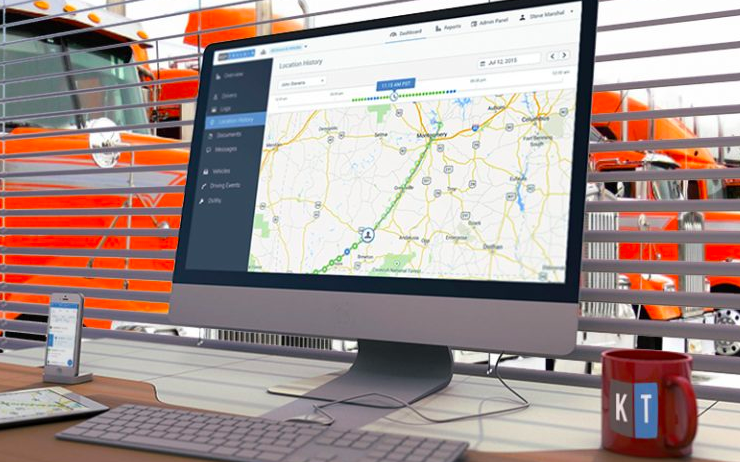The government recently enacted a federal rule, according to which truckers had to use ELDs (electronic logging devices) to track driving time. What have its consequences been? Read on the find out.
Lower Efficiency
According to data of the DAT, more than two-thirds of truckers are driving fewer miles since the ELD rule took effect. Just under three-quarters reported earning less money because they must stop driving after 11 hours.
Some companies are requesting more two-driver teams than in the past. To make sure freight is delivered on time, teams can drive double the miles in a day to ensure despite any complications they may experience. By using ELD devices, drivers can also plan their routes efficiently.
Big fleets have found a way to stay productive by sending out another truck to pick up a delivery in case a driver is out of hours or delayed. This isn’t true for one-truck operations, who have no options if they’re out of hours.
Since the rule came into effect, the issue of detention pay became very important. This is compensation companies pay drivers while waiting to load and unload cargo somewhere. Big fleets got detention pay in the past, while receivers and shippers told smaller companies to deal with the delays.
Prior to the mandate, some of the shippers were panicked because they were worried they wouldn’t get trucks. The fight over detention pay will continue raging until the trucking industry holds shippers accountable for delays.
Rising Trucker Employment
In the wake of the new rule, it looks like trucker employment is growing. In February 2018, there were 1.47 million truckers in the USA, up 1.4 percent y/y according to the Bureau of Labor Statistics. Most truckers are adjusting to the new rule, according to which they can’t drive more than 11 hours a day, after which they have to take 10 hours off.
Increasing Freight Demand and Rates
There are more loads chasing after available trucks because truckers have to reduce miles traveled per day to adhere to the new limit. A buoyant economy and increased freight demand have exacerbated the problem. Due to reduced capacity to haul freight, rates have increased by 40 percent in the past few months.
According to experts, net income is going to grow significantly in 2019. DAT also finds that freight rates are now higher than at any time in 2017. Their data show rates ranged from $2.14 to $2.50 per mile, depending on the load, which is 25% more on average.
Increasing Insurance Rates
Insurance providers are looking at a driver’s safety record, which is based on FMCSA score, taking into account compliance, safety, and accountability. A trucker’s CSA score factors in collisions, safety, roadside inspections, crash reports and data from investigations.
Not having an ELD will have an adverse effect on a driver’s CSA score, thereby driving up premiums. At present, insurance can cost an owner-operator up to $14,000 a year.
Less Patience For Slow Shippers
ELDs don’t let truckers adjust their paper logs manually to give themselves more driving time when they are hung up at docks. Before ELDs were introduced, a lot of shipper and receiver violations were swept under the carpet because that’s how logs were managed.
Finally, wait times can cause a truck driver to lose up to $1,500 per year. On an industry-wide scale, this will cost the industry an estimated average of $1.2 billion in income annually. DAT surveyed 645 carriers, 211 of whom said their wait times were over two hours.
That could change as capacity tightens. Some drivers are saying there are some changes in shippers’ attitudes about delaying drivers at docks since ELDs became mandatory. One trucker said he had started to see more pre-staging of loads, which helped a lot.

